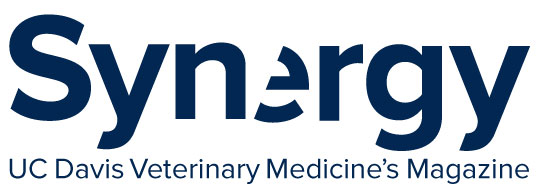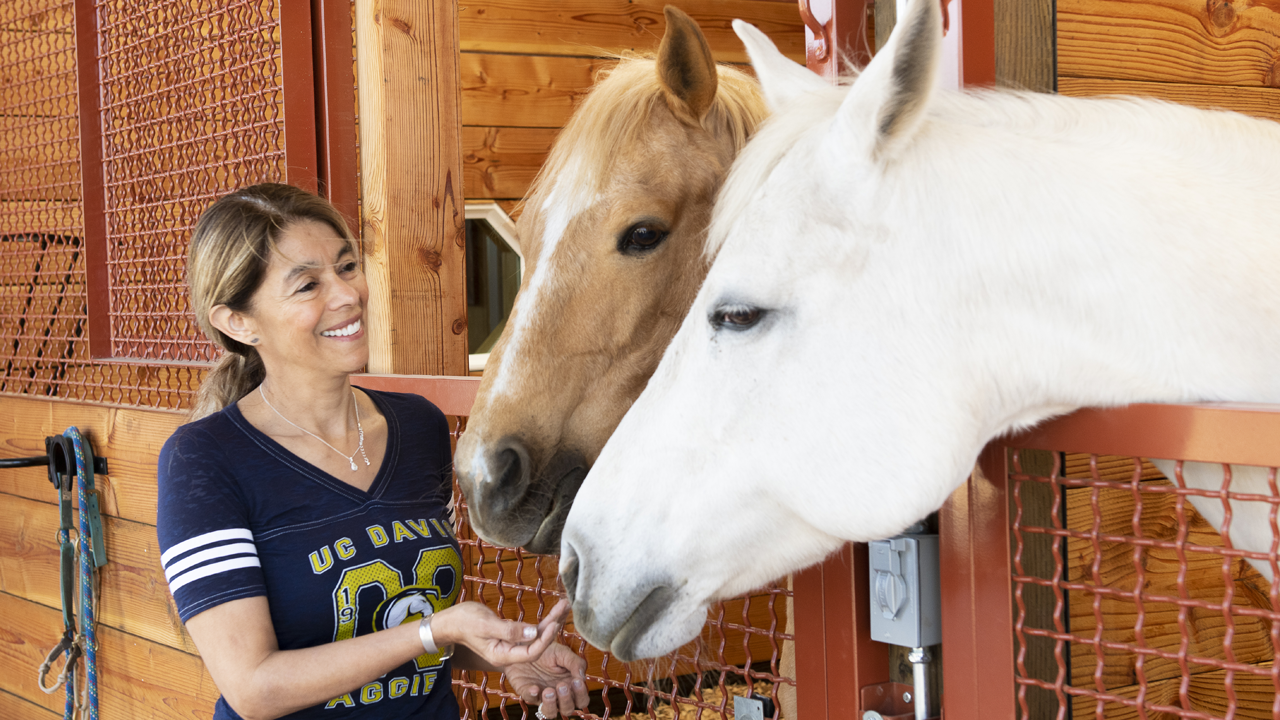
Clinical Updates
Equine Medicine Becoming More Specialized
Equine medicine at UC Davis continues to advance thanks to board-certified faculty members concentrating on subspecialties within their internal medicine discipline.
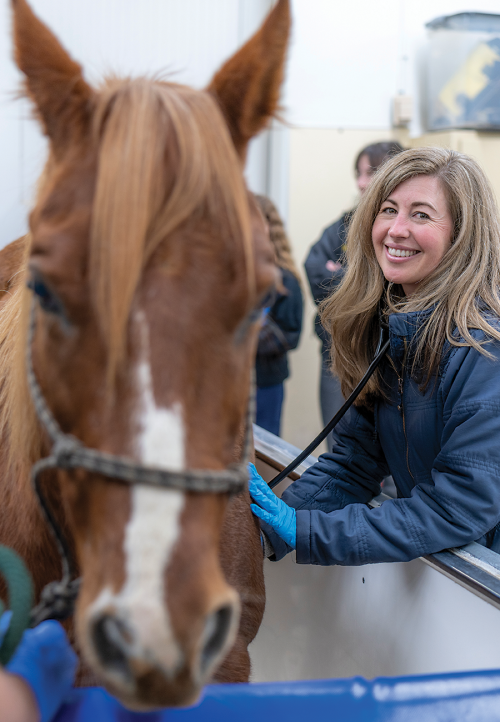
Suzzie, a 23-year-old American paint horse, was admitted to the UC Davis veterinary hospital with a severe case of squamous cell carcinoma. Over the following 18 months, she underwent multiple surgeries and chemotherapy.
Thanks to the collaborative nature of the hospital and unique focus areas of the faculty specialists, she is now cancer free.
Equine medicine at UC Davis continues to advance thanks to board-certified faculty members concentrating on subspecialties within their internal medicine discipline. Due to their extensive teams—including house officers (usually residents), technicians, and students—faculty members can divide their caseload into individual concentrations such as neonatology, oncology, neurology, and cardiology, while also providing broad expertise in internal medicine. This allows each patient to receive more personalized care, giving horses like Suzzie the attention they need to survive.
In addition to these subspecialties, the service recently added two new clinical positions, filled by board-certified internists Drs. Fiona Wensley and Rana Bozorgmanesh. Not only is the ever-increasing equine caseload benefiting from this specialized care, but DVM students receive expert training in some of the most cutting-edge procedures in equine medicine. As they graduate and forge their own career paths, they continue UC Davis’75-year legacy of caring for large animals throughout California and beyond.
Oncology
Suzzie’s veterinarian, Dr. Emily Berryhill, has focused nearly her entire career on caring for horses.
After three years in private practice, the UC Davis alumna returned in 2013 to complete a residency in large animal internal medicine and has been with the school since then. Now on faculty, Berryhill helps clients manage the unique challenges that equine cancers can present. However, the collaborative nature of care at UC Davis allows Berryhill to work closely with oncologists, surgeons, and pathologists to accurately identify cancers.
Together, Berryhill and her clients use this information to develop optimal treatment plans, always taking into consideration quality of life for the patient. Individualized therapeutic plans may include surgery, chemotherapy, immunotherapy, or radiation therapy on the state-of-the-art linear accelerator.
Being a specialty referral hospital, we see some of the most difficult cases, so there is an innate challenge that comes with them. But the ability to offer these multiple treatment modalities under one roof is unique. I don’t know of many other places where this exists.”
—Dr. Emily Berryhill
“Being a specialty referral hospital, we see some of the most difficult cases, so there is an innate challenge that comes with them,” Berryhill said. “But the ability to offer these multiple treatment modalities under one roof is unique. I don’t know of many other places where this exists.”
Berryhill continues to strive for better outcomes with cancer patients and is currently working on clinical trials of different cancer drug applications.
“From a research perspective, we’re able to take problems we observe as veterinarians—for example, minimal published information on the best dose of a chemotherapeutic drug for a horse—and develop clinical trials to help generate this information while hopefully seeing treatment responses in patients in real time,” she said. “It’s also exciting to share our advancements with other veterinarians to help horses elsewhere.”
Berryhill enjoys the increased one-on-one client contact that oncology cases bring due to their extended natures. She became especially close with Suzzie’s owners, Bill and Judy Michelson.
Suzzie is alive today is because of Berryhill and her never-ending dedication.
When asked about Berryhill, Judy’s only response was that she couldn’t say enough good things about her. Bill’s voice cracked when he exclaimed that the only reason.
Suzzie is alive today is because of Berryhill and her never-ending dedication. “I’ve come to appreciate the dedication and commitment of these owners,” said Berryhill. “We have some special patients that endure quite a bit over the course of their treatments. We get really close to themover several months or even a year. These relationships with both horse and owner have become important to me as a caregiver.”
Neonatology
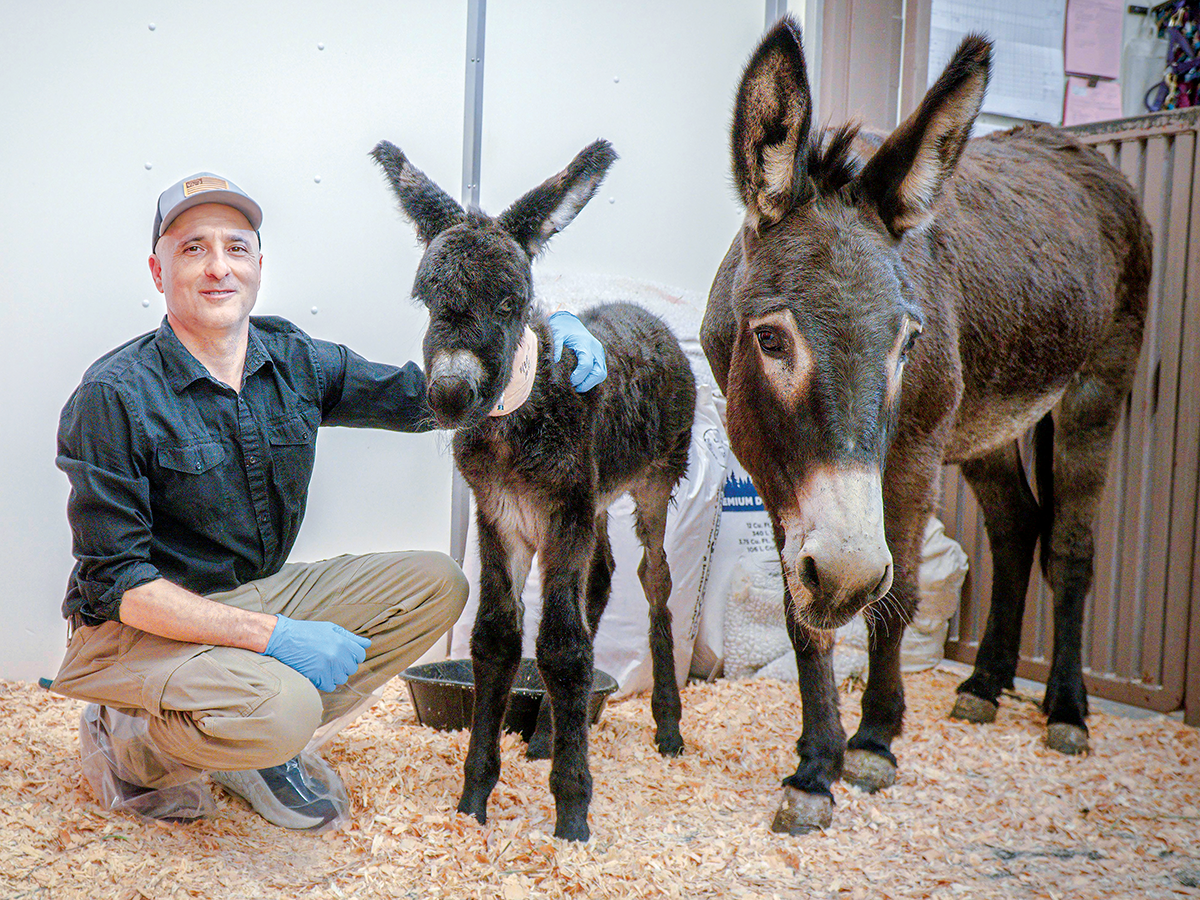
Dr. Gary Magdesian has been at the helm of the Lucy G. Whittier Neonatal Intensive Care Unit (NICU) for nearly two decades. He leads a highly trained team of house officers, technicians, students, and undergraduates (UC Davis Foal Team) whose collaborative efforts manage the complicated neonatal cases.
“A newborn foal is at its most vulnerable stage of life,” said Magdesian, the Roberta A. and Carla Henry Endowed Chair in Emergency Medicine and Critical Care. “At no other time will they be this susceptible to infection, organ failure, metabolic failure, or injury. I find them to be the most challenging and complex cases in all of equine medicine.”
Critical conditions treated in the NICU include maladjusted foal syndrome, failure of passive transfer, neonatal isoerythrolysis, orthopedic problems (e.g. contracted legs,crooked legs), prematurity, and sepsis. Care of premature foals can be especially laborious—few equine hospitals have the resources and capabilities of UC Davis to care for critically ill premature foals 24/7 for extended periods. Even the simple task of keeping a premature foal down (to help its bones ossify) takes around-the-clock dedication from the volunteer Foal Team.
Thirty years ago, a critical premature foal probably would not have survived. The knowledge base of equine medicine has increased significantly. With that comes higher expectations from clients and their willingness to go further for their animals.”
—Dr. Gary Magdesian
Thanks to advancements in pain management, antibiotics, metabolic support, and ventilator technology, the NICU can offer far more than when Magdesian was a DVM student at UC Davis in the early ’90s.
“Thirty years ago, a critical premature foal probably would not have survived,” Magdesian said. “The knowledge base of equine medicine has increased significantly. With that comes higher expectations from clients and their willingness to go further for their animals.” Magdesian estimates that, with a lot of time, work, and dedication, it is possible for a foal born up to six weeks premature to survive and become a sound and functional athlete. But he’d like to see that number become even higher. He envisions the NICU having the same prenatal and neonatal success that human medicine has in saving extreme premature cases.
“Foals carry so much promise and potential for the owners,” Magdesian said. “I feel an obligation to help clients achieve what their foal was bred for and fulfill their hopes and dreams.”
Cardiology
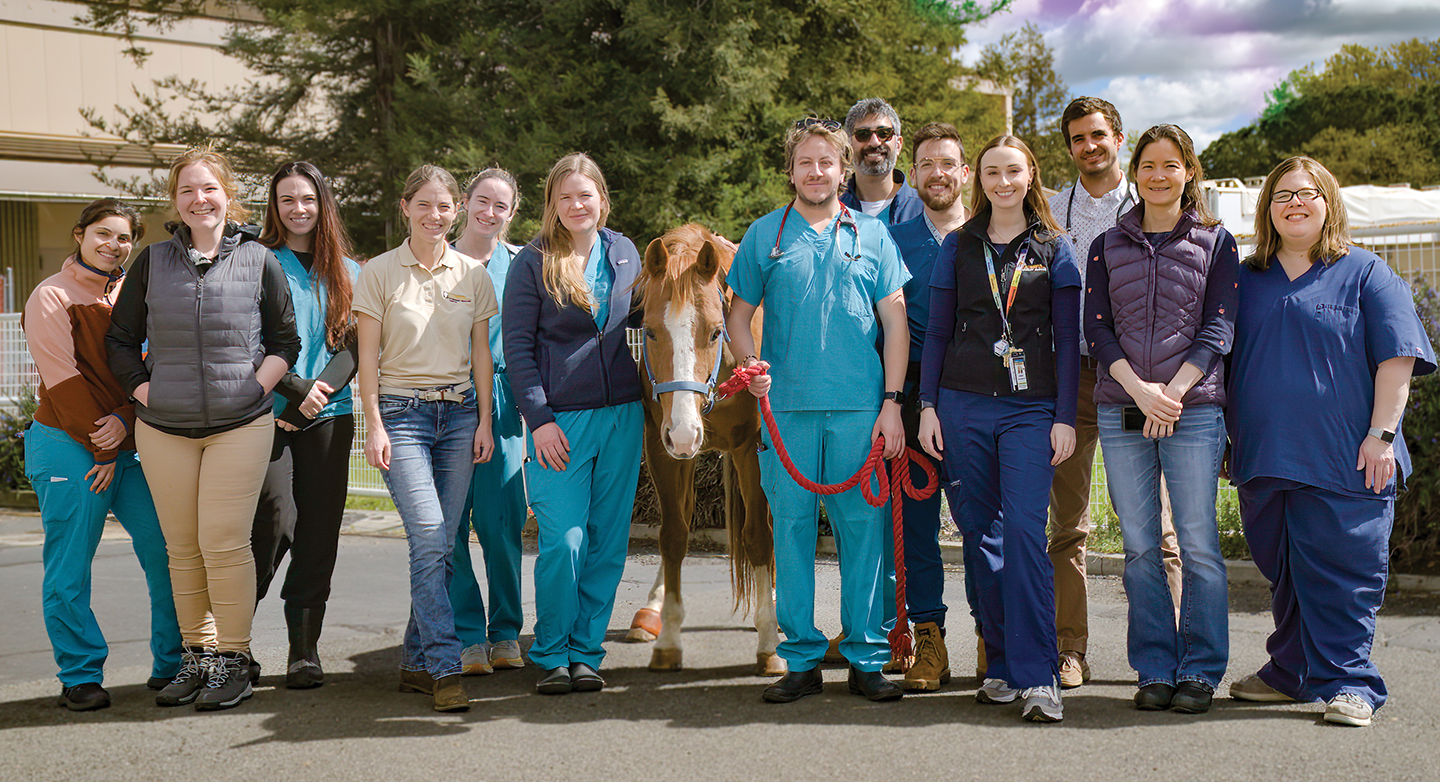
While UC Davis does not have a dedicated equine-only cardiologist, the hospital has three board-certified cardiologists who collaborate with equine clinicians. They take a keen interest in equine cardiology and are dedicated to advancing cardiac care for horses at UC Davis.
To accurately diagnose equine heart disease, cardiologists use cardiac ultrasound (echocardiography), electrocardiography, angiography, cardiac catheterization, and blood testing. These techniques are used in horses as part of the in-depth evaluation to determine the underlying problem and to recommend appropriate treatment.
Detection of subtle heart problems in performance horses may require evaluation while the horse is exercised on one of the high-speed treadmills in the Claire Giannini Hoffman Equine Athletic Performance Laboratory.
Recent collaboration between cardiologists, internists, and the Equine Field Service accomplished the first transvenous electrical cardioversion at the school in more than a decade. The rarely performed procedure shocks a horse’s heart back into a regular rhythm.
Neurology
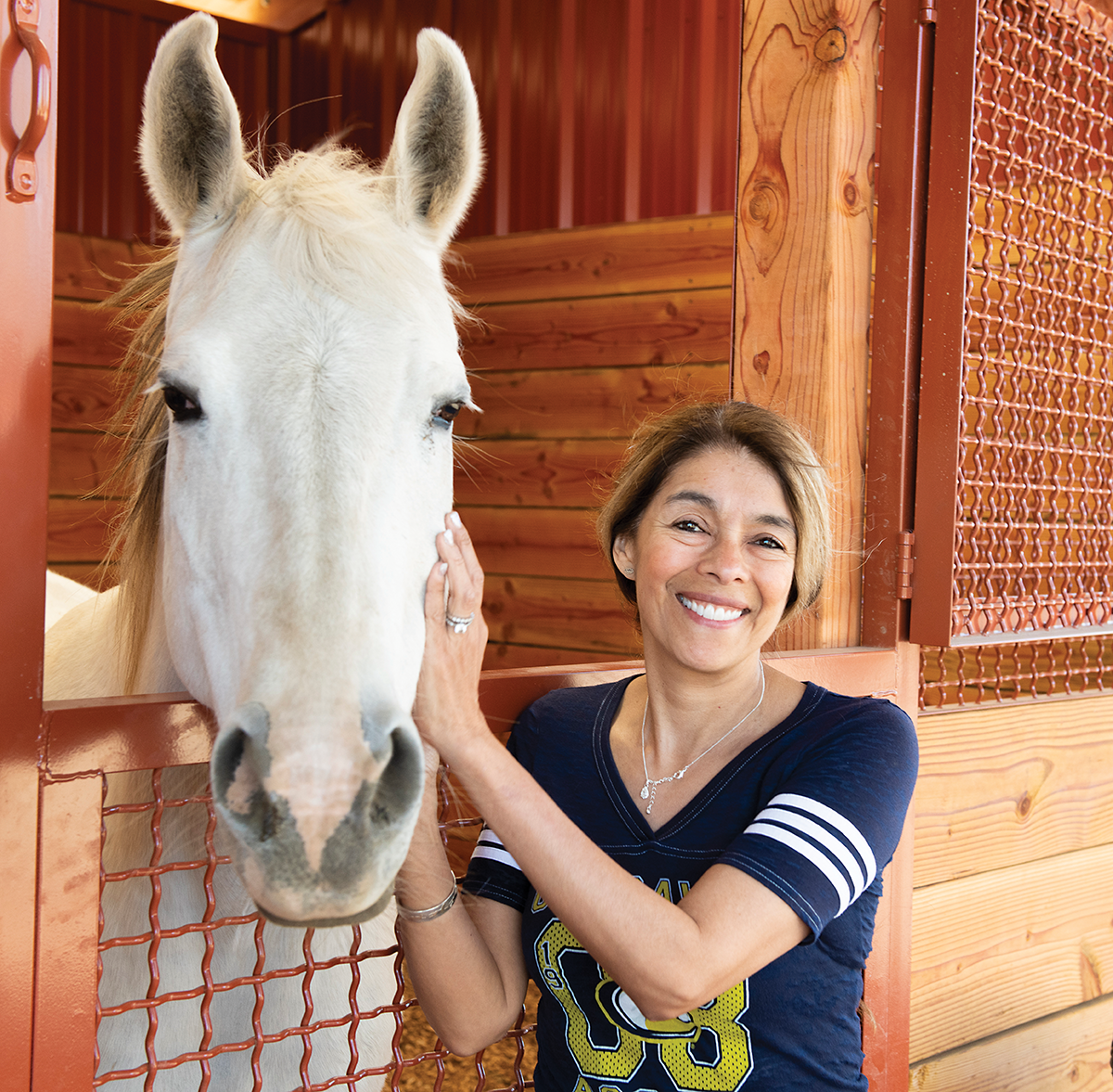
Dr. Monica Aleman’s career trajectory was destined to focus on equine neurological cases, to an extent no one else had achieved.
By 1999, she earned board certification in large animal internal medicine and had been a practicing veterinarian for 10 years as part of the UC Davis team, with her work more directed toward neurological and muscle disease cases. Drs. Richard LeCouteur and Terry Holliday, both pioneers in the field of veterinary neurology, were mentoring her, and she earned a Ph.D. in muscular diseases in 2004.
But still not enough was being done for equine neurological cases. Most ended in euthanasia, Aleman explained.
“Much of that, however, was because of external challenges with the cases based on their size,” Aleman said. “I thought, we can do better for those large animals—let’s take on those challenges and save them.”
With that mindset, she set out to pursue what no one in veterinary medicine had accomplished—becoming the first veterinarian dual board certified in large animal internal medicine and. neurology. While neurology resident training programs had existed for many years, they were, and remain, overwhelmingly focused on small animals. But Aleman knew that was the only path to achieve her goal.
With the goal to help save large animals, Dr. Aleman became the first veterinarian dual board certified in large animal internal medicine and neurology.
So, she left her full-time clinical position at UC Davis and was accepted into the school’s neurology residency. In 2013, she achieved her goal of becoming dual board certified in her disciplines. To this day, there are only six veterinarians in the world who have earned that status in internal medicine and neurology.
While 95% of the cases seen during her residency were dogs and cats, the experience gained, and knowledge learned, extrapolated well to large animals. She returned to the clinic and became a professor concentrating on equine neurological cases.
“That changed the rest of my life,” said Aleman, who serves as the Dr. Terry Holliday Equine and Comparative Neurology Presidential Chair. “At UC Davis, we have since accomplished so much to enhance and advance neurology in the world.”
Her research and clinical care have made UC Davis the most robust translational medicine facility worldwide for cases of equine protozoal myeloencephalitis, equine herpes myeloencephalopathy, and other devastating neurological disorders. Combined with her connection to the school’s Neuromuscular Disease Laboratory and Clinical Neurophysiology Laboratory, Aleman’s unique perspective on equine medicine is saving lives that never would have been given a chance 20 years ago.
Through her efforts, she helped secure donor funding for a standing computerized tomography (CT) scanner that will be installed in the new All Species Imaging Center in late 2024.
Aleman is also helping the school advance technologically. Through her efforts, she helped secure donor funding for a standing computerized tomography (CT) scanner that will be installed in the new All Species Imaging Center in late 2024. Only a handful of facilities in the country have a standing CT, allowing the hospital to scan the head, neck, and other areas of the horse.
“Beyond having the specialists, of course, you also need the equipment to advance a specialty,” said Aleman. “A standing CT will be a complete game changer for neurological cases.”
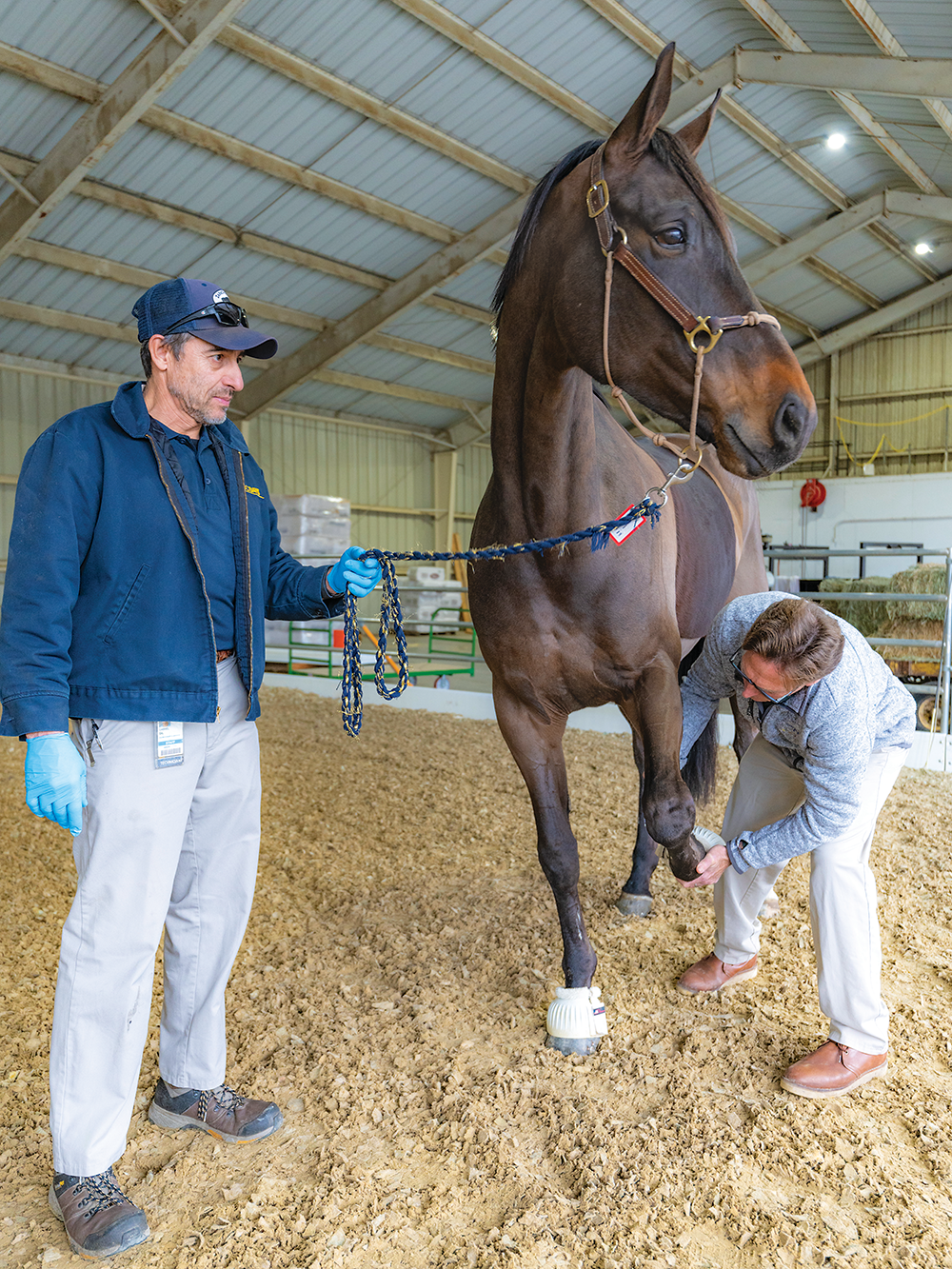
Lameness Pavilion Opens
Horses brought to the Large Animal Clinic for lameness evaluations are now being seen in a more optimal space. By repurposing underutilized hospital barn space, the school has opened the Equine Lameness Pavilion, giving clinicians a better environment to conduct necessary tests and properly evaluate patients.
The Equine Integrative Sports Medicine Service and the Equine Surgery and Lameness Service examine horses daily for a variety of lameness or performance problems. Lameness evaluations include detailed physical examinations and careful observation of horses in motion. The new pavilion adds a large arena, which allows for better evaluation of subtle gait abnormalities or stiffness.
Observing a horse performing the complex movements associated with its discipline can greatly improve the accuracy of an examination and the resolution of the problem.
The larger area will provide more space for sport horses to be observed under saddle to detect certain injuries that are only apparent when a horse is ridden. Observing a horse performing the complex movements associated with its discipline can greatly improve the accuracy of an examination and the resolution of the problem.
The pavilion also provides enough room to conduct dynamic scoping observations, such as overground videoendoscopy, which enables veterinarians to exercise a horse in its normal environment and diagnose causesfor upper respiratory collapse not observed during resting endoscopy. Previously, the university’s nearby Equestrian Center was used for these dynamic examinations.
These more in-depth evaluations greatly increase the likelihood of making a definitive diagnosis, helping clinicians and owners execute an ideal treatment plan and improving the well-being of equine patients.
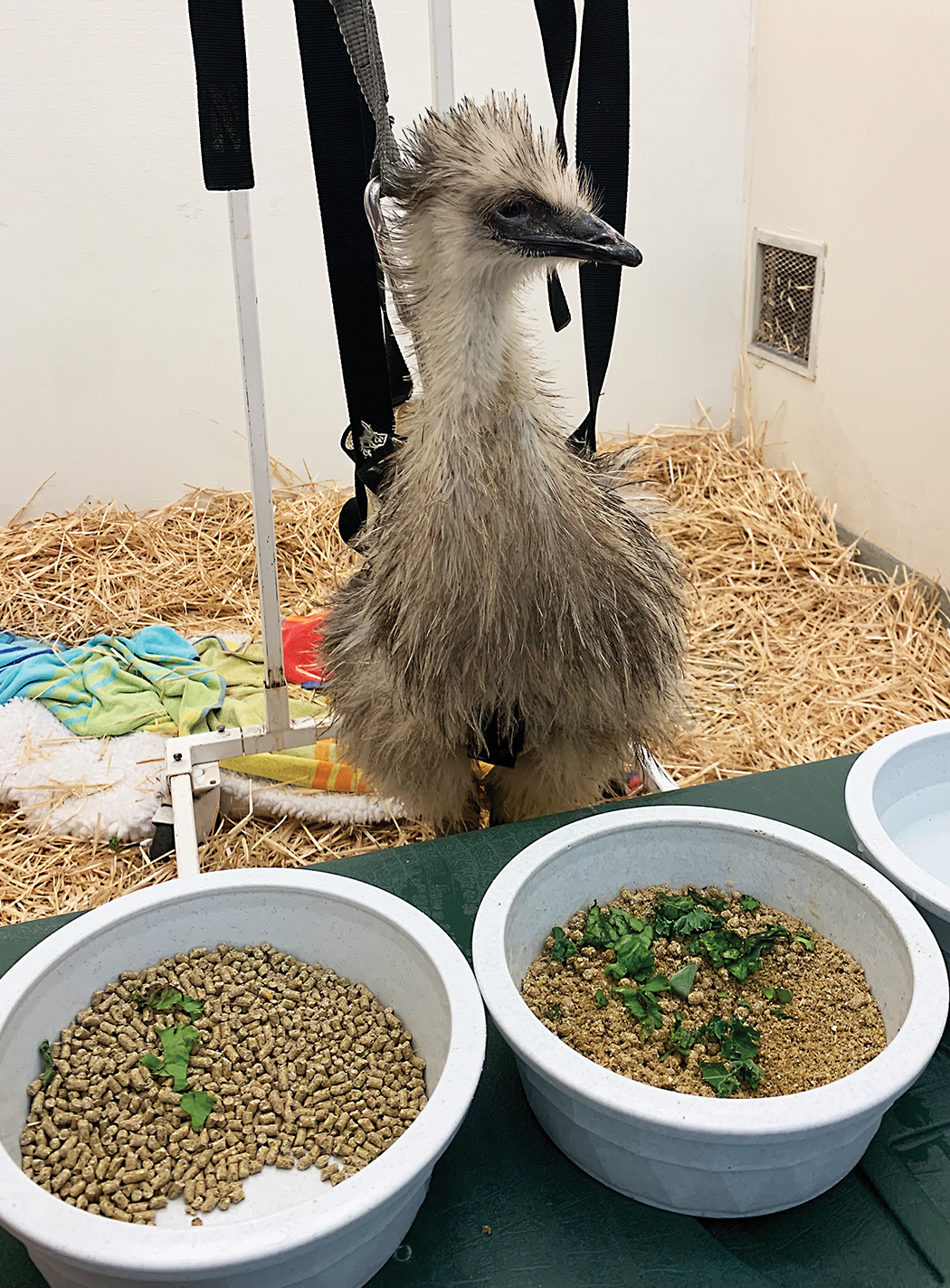
Emu Recovers from Severe Marijuana Intoxication
The Companion Exotic Animal Medicine and Surgery Service recently treated Harold, a 4-month-old emu, for severe marijuana intoxication. Faculty members Drs. Hugues Beaufrere and Krista Keller, along with residents Drs. Lucy Megan and Ariella Darvish, led Harold’s care team throughout his 8-day hospitalization. His extensive recovery process, however, required the dedication of the entire exotics team, including specially trained veterinary technicians, as well as the Intensive Care Unit and other hospital services.
Harold’s treatment consisted of continual intravenous fluids, including intralipid emulsion therapy, to reduce the intoxication effects—mainly his inability to right himself, lethargy, and significant ventral torticollis (twisting of the neck). Additionally, he was placed on a continuous sedative infusion to reduce his hyperactivity and thrashing, as well as to help decrease his stress from handling and degree of capture myopathy (muscle injury associated with increased exertion, prolonged restraint, hyperthermia, or excessive pacing).
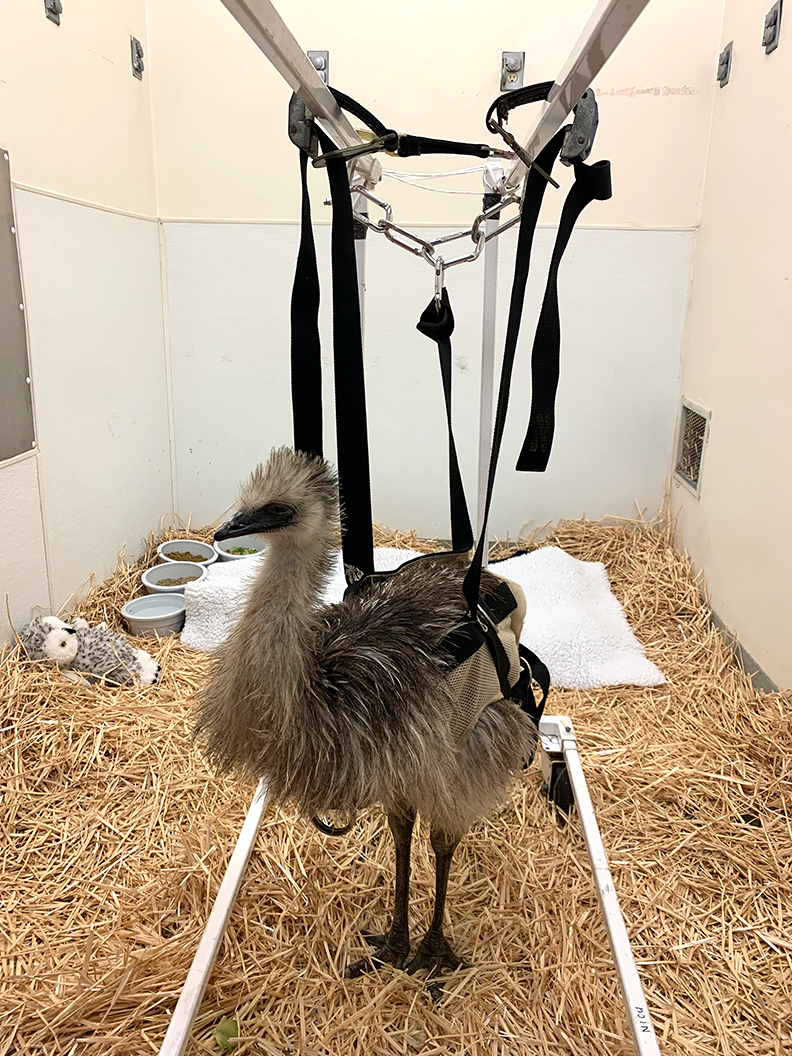
Emus are a high-risk species for capture myopathy, and Harold was unable to bear weight for several days while recovering. This myopathy can result in severe muscle damage and death. As a result, the team performed physiotherapy on Harold for several days and ultimately placed him in a sling normally used for horses recovering from injury.
Harold showed continued improvement throughout his hospitalization and was able to stand and walk on his own at discharge. He still needed continued monitoring and supportive care at home, but his owner reported that he made a full recovery within a few weeks.
